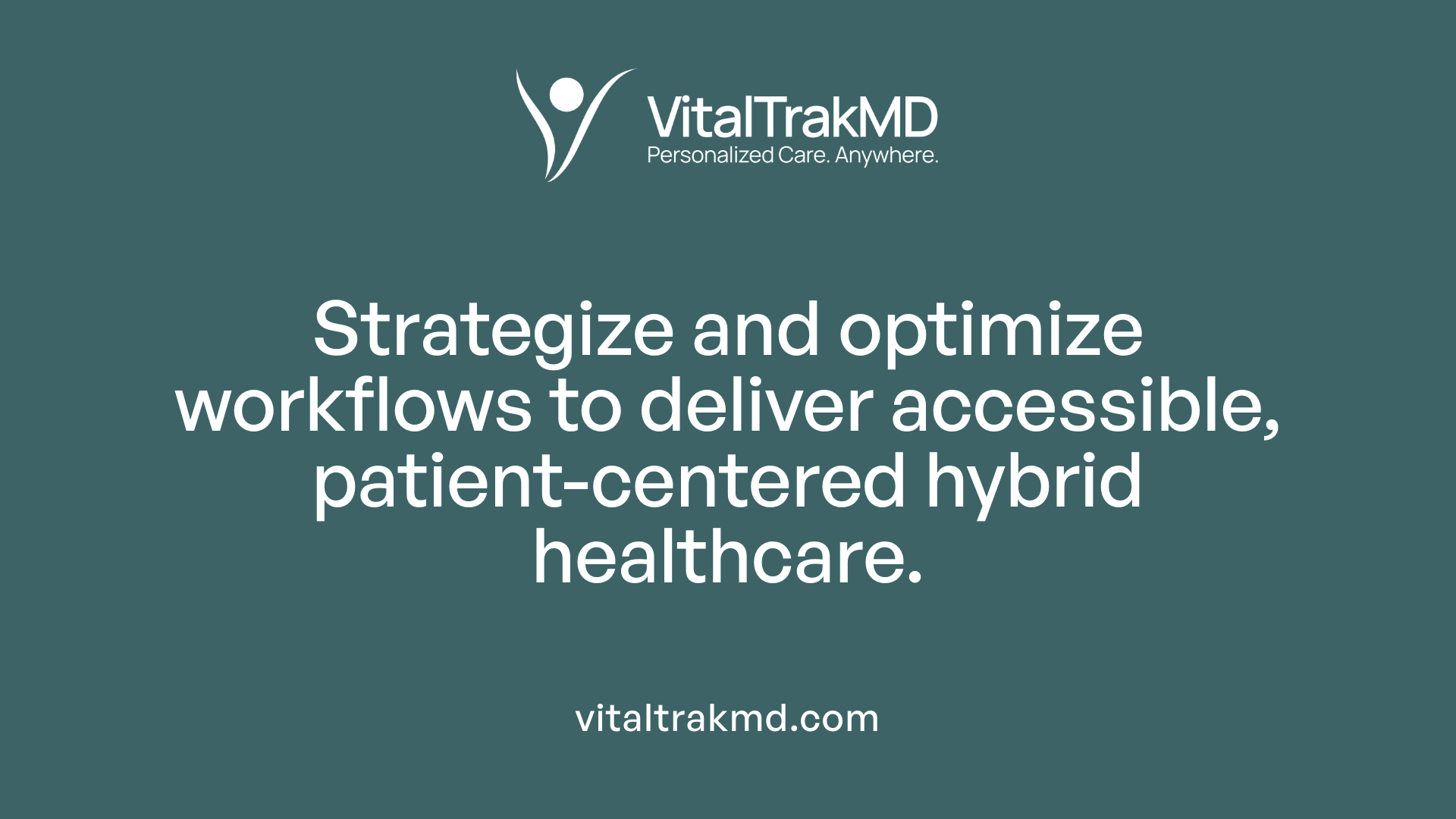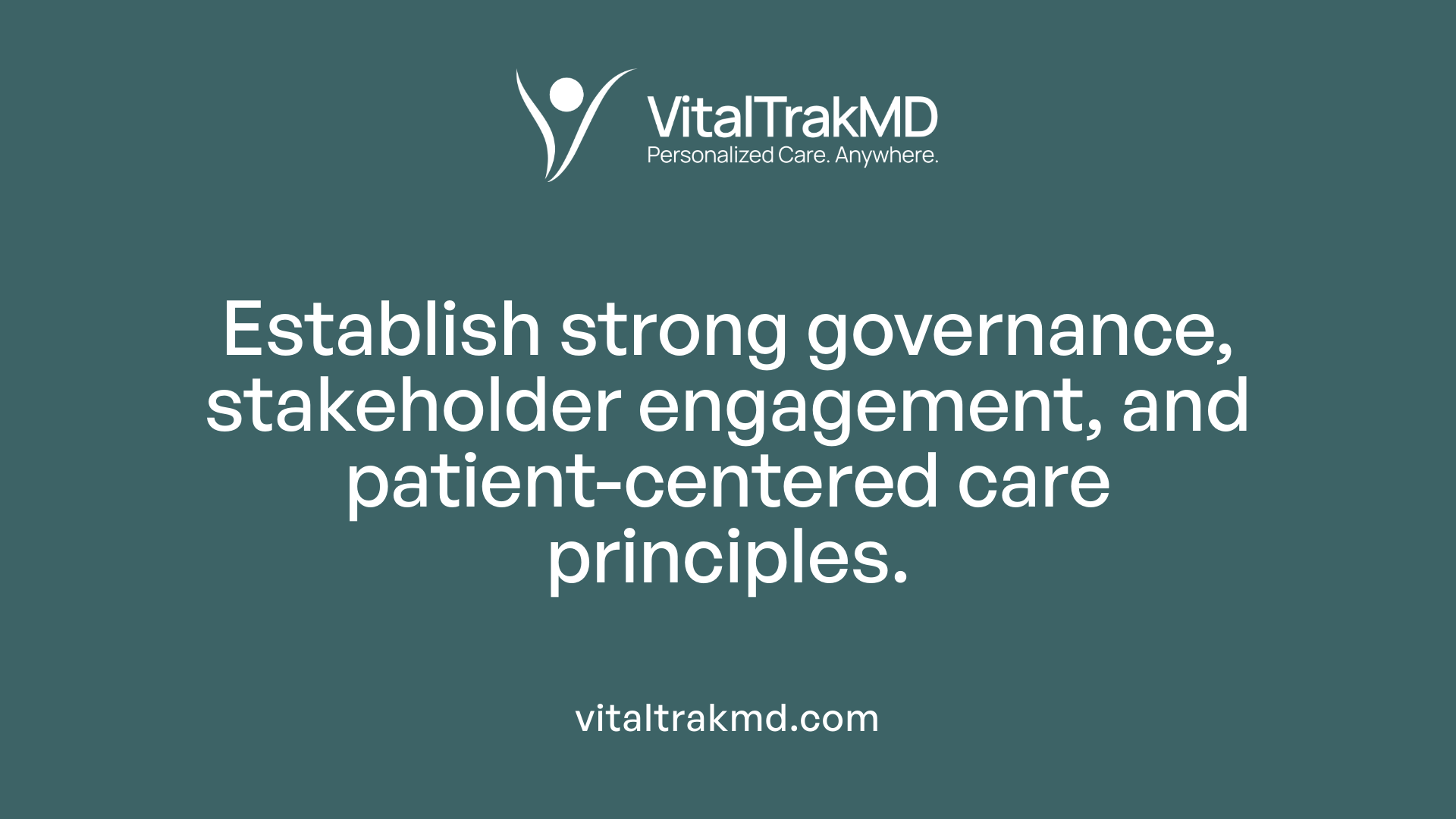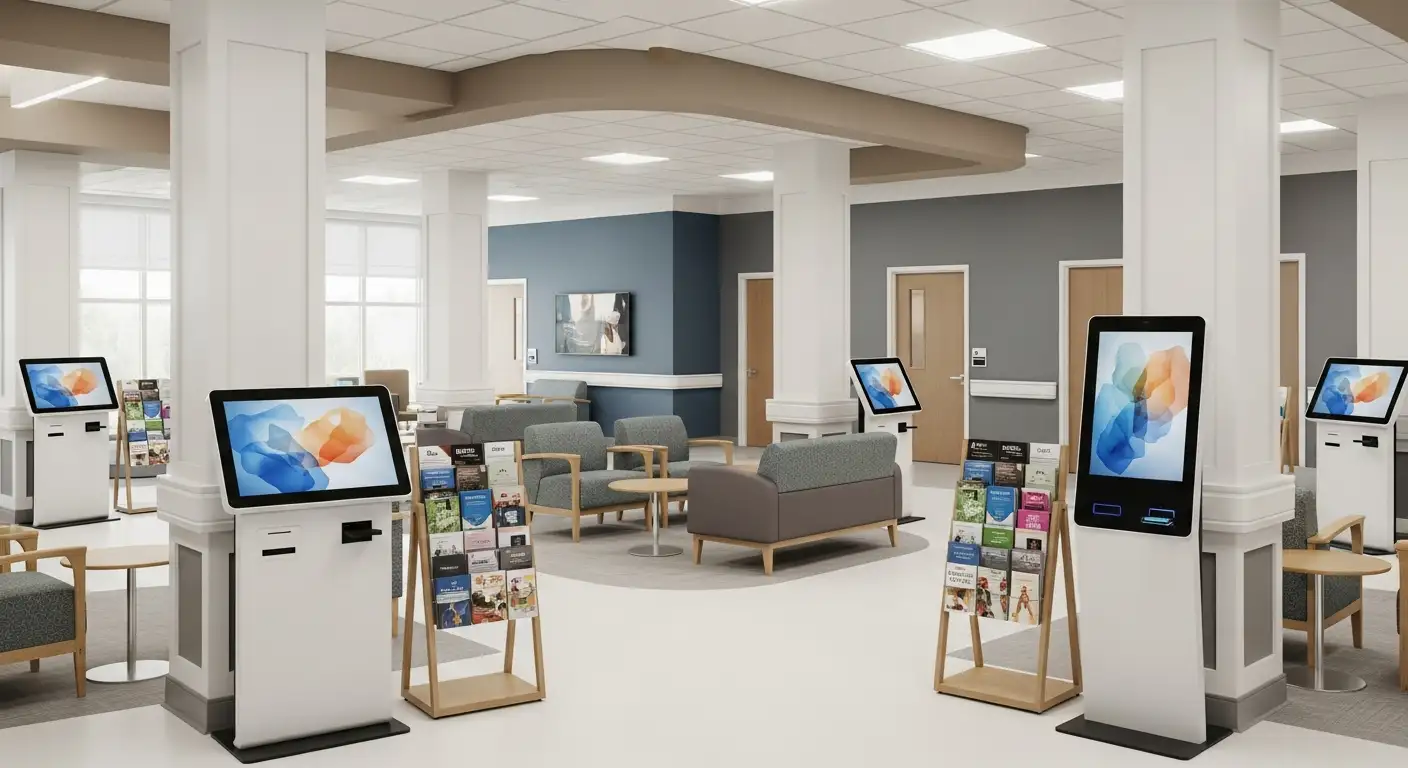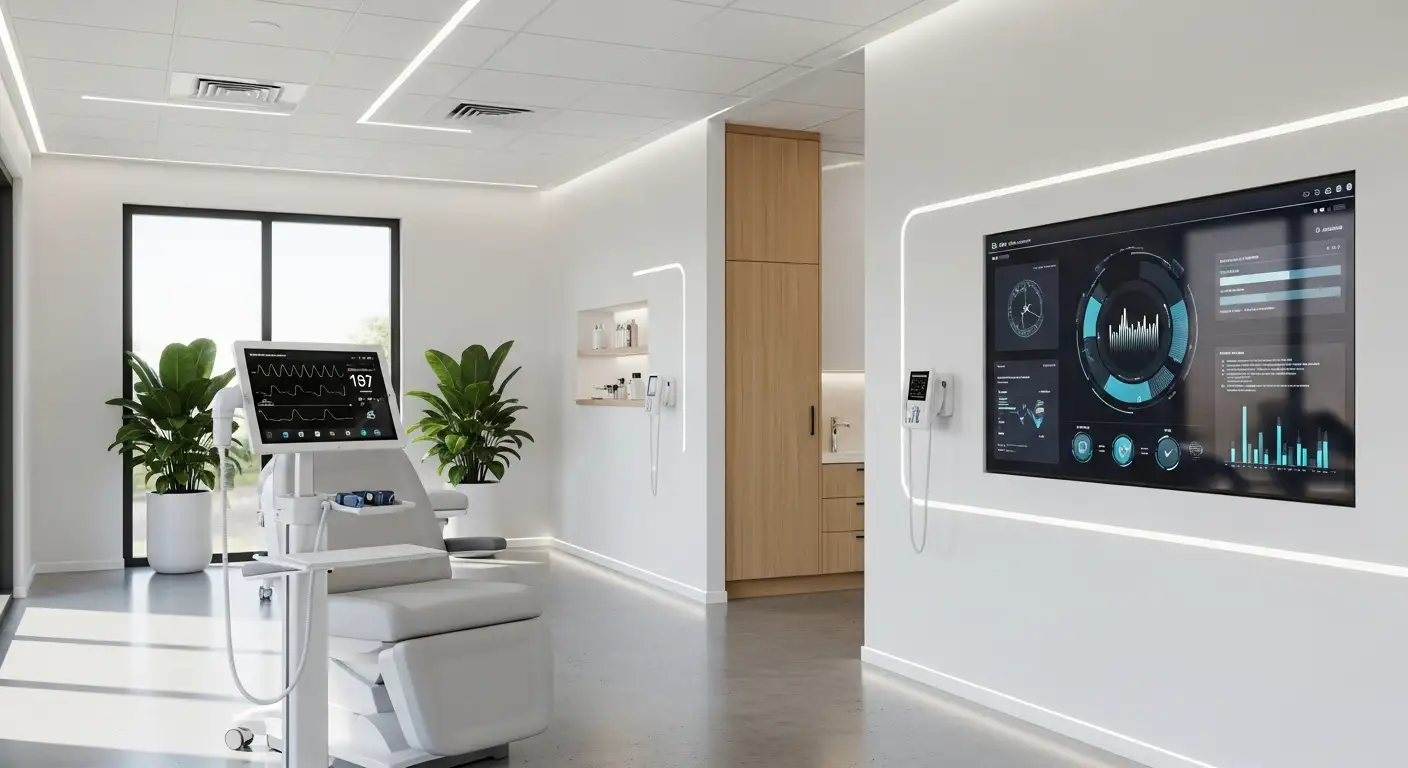How to Transition from In-Person to Hybrid Healthcare Seamlessly

Embracing the Future of Healthcare Delivery
The healthcare sector is undergoing a transformative shift from traditional in-person services to integrated hybrid care models. Accelerated by the COVID-19 pandemic, this evolution utilizes digital technologies alongside physical care settings to enhance access, improve outcomes, and optimize resource utilization. Successfully navigating this transition requires strategic planning, technological investment, workforce adaptation, and a commitment to patient-centered care. This article explores key steps, best practices, frameworks, and real-world examples to guide healthcare providers in achieving a seamless transition to hybrid healthcare.
Developing a Clear Strategy for Hybrid Care Implementation
 To successfully implement a hybrid healthcare model, organizations must develop a comprehensive strategy that encompasses several crucial steps. The process begins with a thorough assessment of existing services and infrastructure to understand the current capacity for integrating virtual and in-person care.
To successfully implement a hybrid healthcare model, organizations must develop a comprehensive strategy that encompasses several crucial steps. The process begins with a thorough assessment of existing services and infrastructure to understand the current capacity for integrating virtual and in-person care.
Evaluating technology readiness is essential. This includes ensuring the availability of secure, HIPAA-compliant telehealth platforms, remote monitoring devices, and integrated electronic health records (EHRs). Such technology must be reliable and compatible with existing systems.
Staff preparedness is another vital aspect. Healthcare providers and support staff need training on new workflows, digital tools, privacy protocols, and communication practices. This ensures smooth coordination and maintains high standards of patient care.
Understanding patient needs and preferences forms the foundation for a tailored hybrid approach. Analyzing patient demographics, digital literacy, and specific condition management helps in designing accessible and effective services.
Defining clear goals and success metrics guides the implementation process. These include setting benchmarks for patient satisfaction, clinical outcomes, operational efficiency, and cost savings.
Creating detailed workflow plans is critical. These plans should outline the steps for conducting virtual and in-person visits, switching between modes, scheduling routines, and handling emergencies.
Regulatory compliance and privacy considerations must be integrated into every component of the strategy. Piloting new workflows in controlled environments allows organizations to refine processes before full-scale deployment.
To measure progress, organizations should establish robust data collection routines—utilizing patient surveys, EHR analytics, and outcome tracking—to inform ongoing improvements. Effective communication with patients about available services and how to access them boosts engagement and trust.
Ultimately, a well-structured hybrid care strategy harmonizes technology, personnel, and patient-centered practices, leading to enhanced care quality, increased accessibility, and operational resilience.
Investing in Digital Infrastructure and Technology
 Successful transition to a hybrid care model depends heavily on robust digital infrastructure and advanced technology. Healthcare providers must prioritize secure telehealth platforms that ensure patient data privacy and comply with regulations like HIPAA. These platforms should support real-time video consultations, secure messaging, and data exchange with integrated electronic health records (EHR) to facilitate seamless information flow.
Successful transition to a hybrid care model depends heavily on robust digital infrastructure and advanced technology. Healthcare providers must prioritize secure telehealth platforms that ensure patient data privacy and comply with regulations like HIPAA. These platforms should support real-time video consultations, secure messaging, and data exchange with integrated electronic health records (EHR) to facilitate seamless information flow.
Remote monitoring devices play a critical role by enabling continuous tracking of patient health metrics outside clinical settings. Devices such as wearables, sensors, ECG monitors, and portable diagnostic tools allow clinicians to gather real-time data, supporting proactive care and reducing unnecessary visits.
To facilitate effective implementation, healthcare organizations need to focus on thoughtful technology procurement. Choosing scalable, interoperable digital tools that align with existing systems ensures smoother integration and future upgrades. Cybersecurity measures, including end-to-end encryption, multi-factor authentication, and regular security audits, are essential to protect sensitive health information.
Transitioning smoothly involves comprehensive planning around these areas. Healthcare providers should assess current capabilities and identify gaps in their digital systems. investing in flexible infrastructure supports various care pathways like remote monitoring, telehealth, and hospital-at-home services.
Stakeholder engagement, including staff training and patient education, is fundamental. Training programs should familiarize staff with new technologies, workflows, and cybersecurity protocols. Likewise, guiding patients through telehealth platforms, offering test calls, and providing support improve comfort and cooperation.
A phased approach, starting with pilot programs, allows organizations to test technology effectiveness and refine workflows before scaling up. Continual monitoring through patient feedback, outcome measures, and security audits helps sustain a resilient and patient-centered hybrid care system. This strategic investment in digital infrastructure and technology ultimately enhances care quality, accessibility, and operational efficiency.
For more information, search queries like "Technology adoption for hybrid healthcare," "telehealth," "remote monitoring," and "EHR integration" provide valuable insights into best practices and emerging innovations.
Designing Modular and Flexible Healthcare Facilities

How can healthcare organizations adapt their facilities for hybrid care delivery?
To support hybrid healthcare models, facilities need to be designed with flexibility and technology integration at the forefront. One effective approach is creating telehealth-compatible spaces that serve both in-person and virtual consultations. These dedicated rooms should be equipped with high-quality video conferencing systems, reliable internet, and soundproofing to enable private, disturbance-free virtual visits.
Soundproofing is essential for virtual consultation rooms to ensure patient privacy and clear audio quality. By minimizing noise from other parts of the facility, these rooms create a comfortable environment for confidential discussions.
High-speed internet infrastructure forms the backbone of hybrid care. Healthcare facilities must deploy robust, high-capacity Wi-Fi networks with multiple access points, ensuring consistent connectivity across all virtual spaces. This infrastructure supports real-time telemedicine sessions, remote monitoring, and data sharing.
Flexible space utilization is crucial in transforming traditional hospital layouts. Modular rooms that can be adapted easily—such as foldable walls, mobile equipment carts, and multipurpose areas—allow facilities to swiftly switch between inpatient, outpatient, and remote care functions. These adaptable spaces optimize resource use and accommodate the evolving demands of hybrid workflows.
Hospital redesign efforts increasingly incorporate digital health platforms and remote monitoring tools. Integrating sensors, portable imaging devices, and remote care management systems into physical spaces enhances workflow efficiency. For example, remote patient monitoring stations equipped with sensors can be placed in patient rooms or virtual care zones.
Reconfiguring physical layouts to include fewer beds and more flexible workspaces aligns with shifts to hospital-at-home and remote hospitalization models. This trend minimizes overhead costs and maximizes the capacity for virtual and outpatient services.
Strategic planning should include developing clear hybrid strategies, such as digital check-ins, automated appointment reminders, and remote communication channels. These workflows streamline patient care and improve operational efficiency.
By combining thoughtful design, technological innovation, and staff training, healthcare organizations can create facilities that effectively facilitate hybrid care. This integrated approach ensures that care delivery remains seamless, patient-centered, and adaptable to future healthcare challenges.
Design and Technological Considerations for Hybrid Systems
What are the design and technological considerations when integrating hybrid healthcare systems?
Implementing effective hybrid healthcare systems requires careful attention to both design and technology. At the forefront is the interoperability of platforms, which ensures seamless data exchange and communication among different digital tools, electronic health record systems, and physical healthcare settings. This interoperability enables providers to have a comprehensive view of patient information, maximizing care coordination.
Security and compliance are paramount. Systems must be HIPAA-compliant, incorporating features such as end-to-end encryption, secure login protocols, and data access controls. This safeguards sensitive patient data while building trust among users.
User-friendly interfaces are essential for both healthcare providers and patients. Intuitive layouts, clear navigation, and accessible design help minimize barriers to technology adoption, especially for populations less familiar with digital tools.
Scalability and integration capabilities allow hybrid systems to grow and adapt with evolving healthcare needs. Whether adding new features, expanding user bases, or integrating emerging technologies like remote monitoring devices and AI, the systems should be flexible and robust.
Stakeholder engagement is also critical. Developers, clinicians, IT professionals, and patients should collaborate to tailor solutions that fit real-world workflows and preferences. This inclusive approach helps in designing systems that are not only technologically sound but also practically effective.
The rapid shift to hybrid care models, accelerated by the COVID-19 pandemic, highlights the importance of these considerations. Seamlessly blending virtual and in-person care relies on sophisticated, secure, and user-centered technology infrastructure.
Digital health tools such as remote monitoring devices, telehealth platforms, and digital care management systems must be integrated thoughtfully. Attention to health equity by providing accessible, multi-channel options ensures that all patient populations benefit from hybrid care.
Therefore, successful hybrid healthcare delivery hinges on meticulous system design that prioritizes interoperability, security, user experience, scalability, and stakeholder input. These considerations enable healthcare providers to deliver high-quality, continuous, and accessible care across diverse settings.
Frameworks and Principles for Successful Adoption
 The successful integration of hybrid healthcare models relies on a set of foundational frameworks and guiding principles that ensure effective implementation and sustainable operation.
The successful integration of hybrid healthcare models relies on a set of foundational frameworks and guiding principles that ensure effective implementation and sustainable operation.
One crucial aspect is establishing strong governance and oversight mechanisms. These structures provide accountability, set standards for safety and quality, and facilitate compliance with legal and regulatory requirements. Effective governance also involves defining roles and responsibilities, ensuring transparent decision-making, and fostering continuous improvement.
Stakeholder collaboration is equally important. Engaging clinicians, patients, technologists, administrators, and policymakers ensures that diverse perspectives align with clinical goals, technological capabilities, and operational realities. This collaboration helps in designing workflows that are practical, user-friendly, and tailored to patient needs.
Care environment flexibility is another key principle. Developing adaptable physical and virtual spaces—such as hybrid hospital units with fewer physical beds but integrated digital spaces—enhances scalability and responsiveness. This flexibility allows healthcare facilities to quickly adjust to fluctuating demands, optimize resource utilization, and incorporate technological innovations seamlessly.
Digital technology integration forms the technological backbone of hybrid models. Implementing interoperable electronic health records (EHR), telemedicine platforms, remote monitoring devices, and secure communication tools is essential for smooth information flow. Clear workflows and standardized protocols support clinicians and staff in delivering consistent, high-quality care.
Centering care around the patient is vital. Hybrid models aim to offer personalized, accessible, and engaging treatment options that improve health outcomes and enhance patient experience. This includes designing care pathways that offer seamless transitions between virtual and in-person visits and accounting for patient preferences, digital literacy, and health equity.
Additional principles include establishing robust quality measurement frameworks. Regular monitoring of clinical outcomes, patient satisfaction, and process metrics supports ongoing improvement. Clear reimbursement pathways and staff training programs ensure the financial and operational sustainability of hybrid care.
Evidence-based research, including clinical trials and implementation studies, provide insights into best practices and inform ongoing refinements. Coupled with technology advancements, these frameworks create a resilient structure for adopting and sustaining hybrid healthcare models effectively.
Exploring Benefits and Overcoming Challenges
Hybrid healthcare models significantly improve patient access and convenience by blending in-person and virtual care options. Patients can schedule virtual consultations from the comfort of their homes, reducing the need for travel and long wait times. This approach is especially beneficial for those in remote or underserved areas, ensuring continuity of care regardless of geographic barriers.
Cost efficiency is another advantage of hybrid care. It helps decrease expenses for both healthcare providers and patients. Providers save on infrastructure costs such as waiting rooms and physical space, while patients benefit from lower transportation costs and reduced time away from work or daily activities.
However, shifting to this model presents several challenges. Technical barriers like inadequate high-speed internet, interoperability issues between digital platforms, and the need for reliable telehealth equipment can impede seamless service delivery. Ensuring that both providers and patients are comfortable with new technologies requires ongoing training and support.
Data security remains a critical concern. Protecting sensitive health information during digital transmissions involves strict adherence to privacy regulations like HIPAA. Secure, encrypted platforms and comprehensive cybersecurity protocols must be in place to prevent breaches and maintain trust.
Organizational resistance is another hurdle. Transitioning to hybrid models necessitates changes in workflows, staff roles, and culture. Not all healthcare providers may be willing or prepared to adopt new technologies or workflows, which can slow implementation.
To successfully realize the potential of hybrid healthcare, organizations must invest in reliable technology infrastructure, foster staff engagement through training, and prioritize data security. Addressing these challenges with strategic planning and resource allocation ensures that hybrid care delivers on its promise of improved access, efficiency, and patient outcomes.
Facility, Technology, and Workforce Transformation in Hybrid Care
How can healthcare organizations adapt their facilities for hybrid care delivery?
Healthcare organizations need to rethink traditional hospital spaces to support a hybrid care approach effectively. The goal is to create flexible, modular environments that seamlessly blend in-person and virtual healthcare services.
A primary strategy involves designing dedicated telehealth rooms equipped with advanced IT infrastructure, high-definition video conferencing systems, soundproofing, and reliable high-speed internet access. These spaces should be optimized for digital consultations, ensuring privacy and comfort for patients.
In addition to telehealth rooms, physical layouts should be reconfigured to include fewer traditional beds and more adaptable workspaces. This includes incorporating remote patient monitoring stations, portable diagnostic tools, and digital health platforms that support remote examinations and continuous patient monitoring.
Remote technologies such as sensors, portable X-ray devices, ECG monitors, and digital care management systems enable clinicians to perform assessments outside traditional hospital settings. This infrastructure supports hospital-at-home and remote hospitalization, reducing the need for physical space while expanding care options.
Implementing digital check-ins, automated appointment reminders, and secure messaging channels further streamlines operations and improves patient experience. Future-ready facilities focus on integrating these digital tools into daily workflows, ensuring staff are trained to operate new systems effectively.
Ultimately, thoughtful space planning coupled with advanced technologies allows healthcare providers to enhance operational efficiency, patient safety, and service quality in the evolving landscape of hybrid care.
The Path Forward in Hybrid Healthcare
Transitioning to a hybrid healthcare model is a complex yet achievable goal that promises enhanced patient access, improved outcomes, and more resilient healthcare systems. Success depends on strategic planning encompassing technology investments, facility redesign, staff engagement, and continuous quality improvement. Learning from pioneering examples like Sheba Medical Center demonstrates that comprehensive, patient-centered approaches are vital. As the sector evolves, embracing innovation with a focus on equity and safety will be crucial to realizing the full potential of hybrid healthcare, ultimately transforming the patient experience and healthcare delivery worldwide.
References
- Developing a strategy for hybrid care | Telehealth.HHS.gov
- How to Transition Your Practice to a Hybrid Care Model
- Unify Virtual & In-Person Care Across Intake, Triage, & Treatment
- Virtual and in-person care merge for a healthier future | EY - US
- How to Help Patients Adapt to Hybrid Healthcare - Medicai.io
- Designing for flexibility in hybrid care services - PubMed Central
- Adapting to the Hybrid Healthcare Model: What It Means for Medical ...
- Telehealth and the Future of Hybrid Care - Oliver Wyman
Recent articles
Want to Feel Better and Live Healthier?
Join hundreds of patients taking control of their health with personalized care that fits their life – not the other way around.
Rated 4.8/5 by 32+ customers







